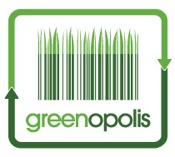George Washington, First Composter-in-Chief of the United States of America
“A knowing farmer, who, Midas like, can convert everything he touches into manure, as the first transmutation towards gold.” —G. Washington (1785)
First Composter-in-Chief of the United States of America
“A knowing farmer, who, Midas like, can convert everything he touches into manure, as the first transmutation towards gold.” —G. Washington (1785)
Well, maybe not as macho a title as Commander–In–Chief, but a lot more earth friendly. George Washington was a “scientific” farmer of his day, and absolutely loved it. He introduced the mule, which fertilizes as it plows, into American agriculture. He planted many of his own trees by hand, which is remarkable given that he had over 300 slaves. He even had compostable teeth—made of wood.
A great little article at City Farmer details Washington’s love affair with compost. He lived at Mount Vernon for 45 years, beginning as a tobacco farmer, but stopping when he realized it raped the fertility of the soil. He switched to wheat, corn and other crops and engaged in a whole range of agricultural experiments, including composting to restore and build h is soils.
His diary notes: "Unless some practice prevails, my fields will be growing worse every year, until the crops will not defray the expense of the culture of them." But true to the disciplined visage that graces dollar bills, Washington never gave up working to improve the soils. He conducted experiments to find the best ways to fertilize. He set up a compost box with different mixtures in different compartments, planted seeds and noted the results. As a result of his experimentation, he began to spread a mix of manure, river mud, fish heads, and plaster of Paris to his fields.
Most interestingly, he built an unusual building dedicated to “curing” manure into fertilizer. He specified that the building have a clay floor and masonry sides. Archaeologists at Mount Vernon have excavated the repository- a narrow 12’x 35’ building with a recessed floor and post supporting a roof.
He wrote his farm manager, “When you go about the repository for the compost ... if the bottom should not be of good clay, put the clay there and ram it well before you pave it, to prevent the liquid manure from sinking, and thereby being lost.” Plans for a markedly similar building appeared in an 1808 agricultural journal.
We don’t know exactly what Washington composted in his structure, but the man himself instructed in 1796, “Let others rake, and scrape up all the trash, of every sort and kind about the houses, and in the holes and corners, and throw it (all I mean that will make dung) into the Stercorary.”
Washington also experimented with crop rotation, fertilizers and soil amendments, and rotating his crops. He was devoted to improving the agriculture of his day, not only as a famer but as the leader of a country establishing itself in the world. He wrote in a letter dated April 1788:
“Every improvement in husbandry should be gratefully received and peculiarly fostered in this Country, not only as promoting the interest and lessening the labor of the farmer, but as advancing our respectability in a national point of view; for, in the present state of America, our welfare and prosperity depend upon the cultivation of our lands and turning the produce of them to the best advantage.”
Nice to think that when Washington was concocting compost mixtures of cow manure, fish heads, and creek mud, he still had the welfare of the new nation close to his heart.
This is not Martha Washington in case you were wondering, but a modern day patriot farmer…
Michelle Obama has given us a new start in this direction with an organic veggie garden at the White House. I hope compost is part of the current President’s agenda.
Not composting in these resource constrained times seems downright un-American! Take it from George Washington himself.
Greenopolis.com is dedicated to our users. We focus our attention on changing the world through recycling, waste-to-energy and conservation. We reward our users for their sustainable behaviors on our website, through our Greenopolis Tracking Stations and with curbside recycling programs.
GREENOP4666

